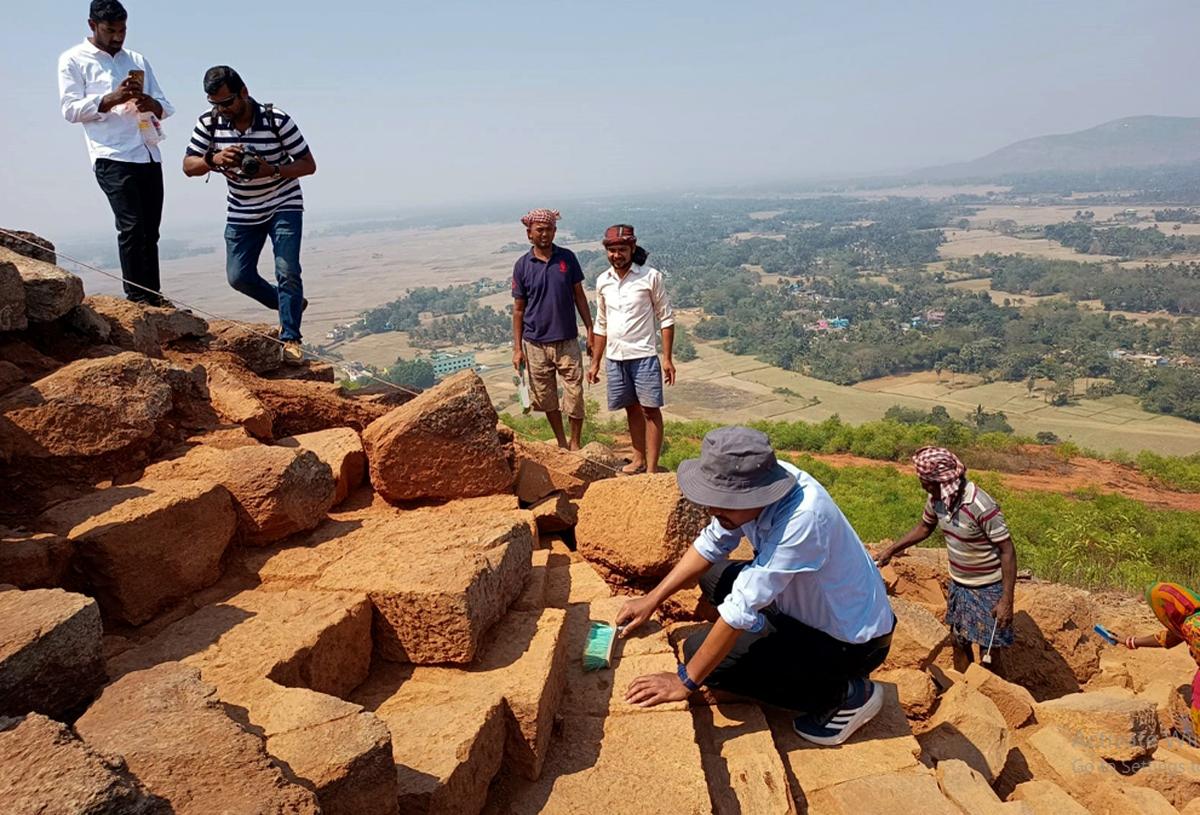For the ₹3,000-crore ambitious endeavour to turn “Puri” into a world heritage city, the state-run Odisha Mining Corporation began mining “Khondalite” stones.
The Khondalite stones for the beautifying project surrounding the 12th-century Shree Jagannath Temple. In Puri were source from a mining location in the Jajpur region of Odisha, where the Archaeological Survey of India (ASI) accidentally upon a 1,300-year-old stupa.
Mr. Garanayak said the stupa could be 4.5-metre tall and initial assessment showed it may belong to the 7 th or 8 th century.
The archaeological artefact was discover at Parabhadi, which is close to Lalitagiri, a significant Buddhist complex with a lot of stupas and monasteries. The ASI intervened and requested that the Odisha government cease mining when the Buddhist stupa found near the mining site (OMC). Since then, the mining has ended.
The recently unearthed stupa may have deformed in the past. The ASI would now make an effort to fully recover the building’s archaeological value, return it to its former state, and take on site preservation.
“The State government must conduct heritage assessment of a site. Particularly when it situated near any place of archaeological interest, before giving permission for mining. The smaller stupa, which destroyed, cannot restored,” said Mr. Garanayak.
As the proposed mining site contained a portion of the Lalitgiri Buddhist shrine, locals and Buddhist experts had advised the State government against moving through with the project. Even local craftspeople voiced worry that the industrial-scale mining of Khondalite stones would negatively affect their way of life.

Subhendu Bhuyan member of the Jajpur Cultural Council said:
“Those who approved the plan for carrying out quarrying at Sukhuapada should have applied their mind. Knowing well that many massive Buddha statues were discover from Sukhuapada and preserved in the museum inside Lalitgiri archaeological site. They should not have allowed such big mining machines to deployed there,” said Subhendu Bhuyan, member of the Jajpur Cultural Council.
Ancient temple structures frequently employed khondalite stones. In order to make Puri a city of cultural significance. The State government devised an ambitious plan to invest 3,208 crore. Under the Augmentation of Basic Amenities and Development of Heritage and Architecture (ABADHA) project. Over the course of three years.
It suggested that Khondalite stones utilised extensively to preserve the aesthetic value of several projects, including the Matha Development Initiative. Puri Lake Development Project, Jagannath Ballav Pilgrimage Center, and Heritage Security Zone.
Of the six Khondalite stone blocks set aside for OMC, Sukhuapada was the largest. In addition to the 78.3 acres at Sukhuapada where khondalite mining is taking place. Additional locations in the Khordha district include Teligarh (27.5 acres), Gobindpur (20.3), Chandia (4 acres). And Kundakundi Kunda stone quarry (4.67 acres), Kurumpada ornamental stone quarry (1.67 acres).
The OMC may have trouble supplying Khondalite stones for the State government. The government’s ambitious temple building programmes now that the ASI has taken control of the Sukhuapada site. Another wave of conflict between the Center and State governments might result from it. The Puri rehabilitation project was the subject of a significant dispute over the violation of ASI rules.

